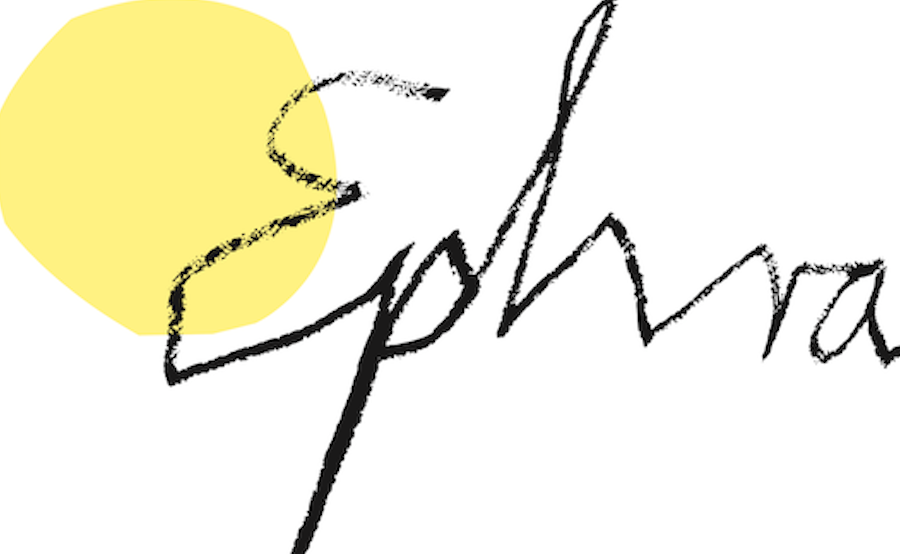Always on the move with Ilya Barrett
Today we are back in the Ephra Studio and have a visitor. Which exciting person do you think we'll meet today?
In walks the animator, illustrator and videographer Ilya Barrett. His mum is – just like most of us – from Ukraine. Unfortunately, Ilya himself doesn’t speak Ukrainian and Russian very well (but he does speak German and English – he grew up in Berlin and his dad is from the USA). Nevertheless, it’s nice that he understands a lot of what we say, even without translation.
Before we get to know him and his work better, he sets up a few things. We see a beamer, a record player, a small lamp and also a reflecting object that is unknown to us. Via the beamer, Ilya gives us a little insight into what he does: music videos, animations for museums or a well-known Berlin film festival, advertising videos as well as free projects and illustrations. Animation literally means "to bring to life" and that is exactly what Ilya does when he sets his figures and objects in motion with the help of digital programmes or simply with pen and paper, sand or puppets. Ilya says he loves all kinds of animation! But why? He explains that animation for him combines different arts – sound, image and storytelling – and then something of his own emerges from it. He used to do theatre, but didn't like being on stage. With animation, he can put himself in roles and tell stories without being in the limelight himself. He thinks that's perfect! However, animation is very, very (time) consuming. For a 4-minute music video, Ilya once had to draw 7,000 individual pictures. Some of them don't seem to make sense at first, but in quick succession they are important to build the bridge between two movements. Then everything looks much less jerky. Sometimes Ilya needs a whole working day to animate one second of film. He grins: no wonder he has a funny relationship with time when his whole (working) week ends up being just five seconds. But he also thinks that this is a sign of good quality: if no one can see how much effort went into it and everything looks easy and fluid, then it works. It’s almost a bit like musicians who practise hour after hour and are simply outstanding at a performance. Speaking of which, what is his favourite music and does he sometimes watch anime? He doesn't have a favourite band and he listens to very different things, depending on his mood, he explains. But he thinks Nirvana (as pictured on one of our T-shirts) is cool! In his spare time, he sometimes plays a saw himself as if it were a violin – a funny performance. And of course he loves anime. He watched a lot of anime as a child, but less now. (He doesn’t want to copy too much, although his drawing style is quite different). But his favourite anime is definitely "Mind Game".
Then Ilya shows examples from the history of photography and film, because actually, he says, every film is an animation made up of thousands of individual images in which only small things change. (He adds with a laugh that filmmakers don’t like to hear that). In the 19th century, there was a photographer named Muybridge who used twelve (and later 24) cameras to photograph a horse galloping at every step. When the individual photos were and are played back quickly one after the other, the illusion is created as if the horse is running continuously. Next, Ilya shows us one of the first cartoons. It is from 1908 and is called "Fantasmagorie". The little man’s movements are not always so fluid, but we are still impressed, because at that time such an animation was something quite groundbreaking and the technology was not yet fully developed. Until it was, some people came up with different optical toys, for example the praxinoscope. This is a drum with twelve mirrors on the outside that can be rotated... and looks exactly like the part on Ilya’s record player! He shows us how to see a moving circuit on the Praxinoscope with twelve individual images or figures by fixing the gaze on one of the reflecting sides. We see a figure that jumps and lands again, a plant that grows and withers again.
We are going to create such a circuit ourselves. For this, Ilya has brought along Lego and modelling clay, but we can also draw or paint.
Ilya has some good tips in store: It's best to sort the Legos by colour and to introduce any colour and shape changes with as many intermediate steps as possible. And when we draw something, it's best to always draw in the same place on the card so that the figure doesn't wobble back and forth. With all this, it is not so easy to have all twelve pictures in view. Sometimes we get a bit lost in the first sequences and lag behind with the following nine. Ilya grins: "What was that again about the sense of time? But he promises to photograph the projects we have started and to animate them on the computer afterwards, because we couldn't look at all the results in the practiceinoscope. We are already looking forward to the next appointment!









